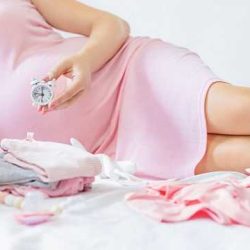Do you know when the most likely fertilization is?
Fertility (fertilization)
You are able to reproduce when your uterus prepares to become pregnant every month, in the form of a menstrual cycle. The first day of the menstrual cycle is the first day of menstrual bleeding. On this day, the lining (inner) of your uterus begins to shed. After menstrual bleeding, the tissue inside the uterus is regenerated. About the fifth day of menstruation, an egg in one of the two ovaries begins to mature on the inside of a fluid-filled sac called a follicle. Around the fourteenth day, when the follicle matures, it ruptures and releases the egg. This follicle turns into a corpus luteum. If the building is fertilized, it makes the hormone progesterone. This hormone plays a vital role in helping the body adapt to pregnancy and the initial development of the fetus.
Fertility time
Because ovulation usually occurs around the 14th day of menstruation, the absence of menstrual bleeding in the next two weeks can indicate pregnancy.
Most likely to get pregnant
The middle of the menstrual cycle is on the fourteenth day when you are most likely to become pregnant.
girl or boy ?
The sex of your baby depends entirely on the sperm that fertilizes the egg. The sperm that contains the Y chromosome, which determines the sex of the boy, moves faster and shorter, but the sperm that contains the X chromosome or the sperm that determines the sex of the baby girl. It moves slower and survives longer. The lifespan of male reproductive sperm in the female reproductive tube is about 24 hours, because the male sperm has less cytoplasm and becomes more inactive as soon as the environmental conditions change. The lifespan of female reproductive sperm in a female reproductive tube is two to five days, because a female reproductive sperm has more cytoplasm and is less vulnerable to environmental changes later in life.
Twin babies
Birth of twins occurs in about one case in 80 pregnancies and is more common in African or Indian breeds. There are two types of twins:
- Identical twins (one egg)
- Twins that are made up of two eggs.
Identical twins are formed by fertilizing an egg with a sperm. The egg divides into one fertilized egg, and then the two cells separate and become two fertilized eggs (zygotes). These zygotes continue to divide naturally, eventually forming two fetuses with identical genes and a common pair.
Double-ovarian twins are formed when two eggs are fertilized by two separate sperm, and each fetus has a separate pair and its own genetic structure.



